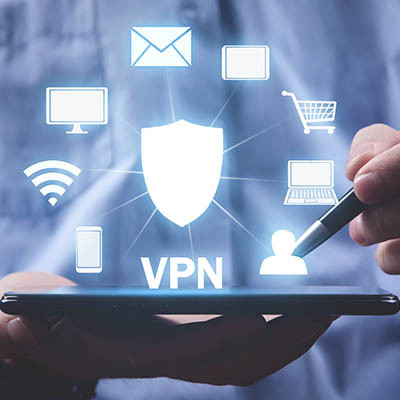With so many employees still working remotely, organizations have turned to technology to ensure that their workers are actually… you know, working. While the need to know what your employees are up to throughout the workday is important, there is now a discussion happening on whether or not this violates employees’ privacy.
Argentum IT LLC Blog
Keeping your data protected is a huge concern nowadays, with more and more safeguards needed to prevent it from being exfiltrated. Encryption is a great way to prevent your data from being any good to those who might steal it. Let’s review what encryption is, and delve into how it works in practice.
If there is one shared priority most businesses and other organizations need to have it’s a strategy on how they are going to go about securing their network, infrastructure, and data from the numerous threats they face. Let’s take a look at three of the most crucial issues surrounding organizational cybersecurity as we head into the new year.
Smart devices and Internet-of-Things devices in general have taken the world by storm, and a home without at least a handful of smart devices is quite rare to find these days. However, smart devices—or devices that connect to the Internet to perform various functions—must be approached with a certain level of caution.
The holiday season has a variety of famous key players, including the likes of Santa, Rudolph, and the rest of the North Pole crew. Each year, they use their magic to help spread goodwill and joy to all the nice children of the world… but did you know that they are also responsible for protecting those who make the naughty list from Santa’s villainous counterpart, Krampus?
As the official managed service provider for Santa’s operation, we have been cleared to share the story about how we’ve helped defy Krampus to save Christmas.
Twitch, Amazon’s popular streaming service where gamers and content creators broadcast to wide audiences, recently suffered a data breach. Thanks to this data breach, folks on the Internet now know just how much these content creators make, and it has exposed a whole new issue that Amazon must resolve.
Phishing is one of those threats that has been around for a long time, and as time passes by, these threats only become more difficult to identify. Some businesses can’t tell the difference between phishing scams and actual emails. Here’s how your company can take steps toward properly identifying and responding to phishing emails.
Even the most cautious employee could fall victim to a well-placed and well-timed phishing email. What are some factors that contribute to the success of these attacks, and what subject lines in particular should people be cautious about? A recent study takes a look at what goes into a successful phishing attack, and you might be surprised by the results.
It can be too easy to overlook the importance of technology and its security, particularly in industries that are deeply steeped in tradition, regardless of how crucial that security may seem when actually considered. Just consider the modern law firm, where technology, data, and the security of such is paramount.
Let me ask you something: how many people do you fundamentally trust? Well, in a zero trust network, that number is reduced to zero. The idea of such a network is that everyone, whether they’re operating inside of the network or out, needs to be verified… and as you might imagine, it has proven effective in preventing data breaches.
Authentication has been a major talking point for the past few years, particularly as the value of data has only increased and security has correspondingly increased in importance. As a result, more secure and reliable means of identity verification have also become more critical. Now, voice authentication is being considered as such a means.
Virtual private networking, while maybe not the most familiar term to everyone, at least seems to be pretty straightforward. Such a specific-sounding term must apply to one aspect of technology and that one aspect alone, right?
Well, kind of, sort of, not really. In actuality, there are two kinds of VPN. Let’s go over what makes them different, and which your business should utilize.
The cyberattack on SolarWinds was devastating for many reasons, and Microsoft has officially uncovered yet another type of malware used in the attack on the software provider. This time, it is a backdoor threat they have named FoggyWeb. What does this threat do and why is it so important to look at this incident even now?
The cloud is a great opportunity for businesses to increase accessibility of data and enhance productivity, especially while remote, but for those who do not know how to approach it, the cloud can be intimidating. Today, we are going to make the case for a private cloud solution and why you should consider it as a viable option for your business, even if it does not seem like it at the moment. You might be surprised by what you learn!
A virtual private network, or VPN, is a critical part of keeping your business safe while operations are taking place out of the office, but a discussion needs to be had about what a VPN can do and what a VPN cannot do. This is especially important to know for keeping your company safe, so without further ado, let’s dive in.
As time has passed, more focus has been put on balancing a user’s identity authentication in terms of its convenience versus its security. This is what has led to the development of solutions like Windows Hello, the biometrics-based system that Microsoft has introduced into the Windows operating system.




















